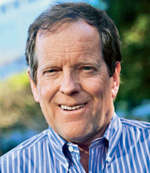sierraclub.org - sierra magazine - july/august 2010 - taking the initiative


Taking the Initiative
By Carl Pope
 Following recent controversies about climate science--plus a snowy winter on the East Coast--polls show that a declining number of Americans believe that human activity is warming the planet. This raises anew the question "How can nonscientists, both voters and policy makers, judge complex scientific questions?"
Following recent controversies about climate science--plus a snowy winter on the East Coast--polls show that a declining number of Americans believe that human activity is warming the planet. This raises anew the question "How can nonscientists, both voters and policy makers, judge complex scientific questions?"
The traditional answer has been "trust the experts." If respected scientific organizations, research universities, and Nobel laureates say sea ice is melting because of increased CO2, they are probably more believable than the oil company flack who says it isn't melting at all. But blindly following experts can lead to trouble. It was, after all, the head of the Atomic Energy Commission who predicted in 1954 that nuclear power would be "too cheap to meter."
The modern approach is "stick with the tribe." As U.S. media and political parties become more ideological, many take their cues from party leaders or favored pundits. If Sean Hannity says there is no global warming, no amount of evidence will convince his listeners otherwise. The trouble with this kind of tribal decision making is that it allows values to trump facts. The relationship between melting sea ice and atmospheric aerosols is neither "conservative" nor "progressive"; it is what it is.
My method of answering questions like "Could nuclear power help solve global warming?" is a tool philosophers call a heuristic--known to most of us as "a rule of thumb." I use it to evaluate the risks of any technology or industrial process: If it creates large volumes of persistently toxic, low-value byproducts, it's a bad bet.
When nuclear power is put to this test, for example, it is shown to be a terrible idea. What about computers and solar cells? They generate persistent, highly toxic waste, and indeed, early silicon-chip manufacturing contaminated California groundwater. But the waste can be dealt with reasonably and safely, and at a cost that doesn't meaningfully affect the price of the final product. So they pass my test.
Now let's look at "clean coal." Burning any kind of coal produces an enormous amount of carbon dioxide, which is both persistent and environmentally troublesome. If that carbon could be trapped and stuck somewhere safe through carbon capture and sequestration, the process would appear to pass my test. But that still wouldn't make coal clean, because burning it produces another large-volume, persistently toxic, low-value material: coal ash. A small amount of this ash is converted into useful building materials, but most is just piled into poisonous mountains. Apply my rule of thumb, and "clean coal" looks like a bad deal.
In December 2008, this judgment was validated when a Tennessee Valley Authority retaining pond burst and spilled 5.4 million cubic yards of coal ash sludge across 300 acres and into the Emory River. First came sticker shock at the cleaning bill--$1.2 billion, by TVA's estimate, to send 17,000 railcars of the goo to a landfill in Alabama. When the first ash arrived, rain followed, and suddenly Alabama had 100,000 gallons a day of tainted water to manage. TVA scrambled to find alternative treatment facilities in Georgia, Alabama, Mississippi, and Louisiana. None was able to successfully process the effluent: The coal ash from a single power plant overtaxed the waste-disposal capacity of five states. How can we affordably handle the waste from 1,600 plants?
So my rule of thumb nixes coal. Notice you can use the heuristic without knowing exactly how toxic ash is. It doesn't matter whether you like or loathe a larger government. You just have to ask whether coal ash is toxic, voluminous, and low value. When the answer is yes, yes, and yes, we've got a red flag telling us to find our electricity elsewhere.
Carl Pope is the chairman of the Sierra Club. E-mail carl.pope@sierraclub.org.
Photo by Kira Stackhouse